
Learn how to drill a pilot hole like a pro. This handy guide will teach you the basics of drilling pilot holes, including the correct drill bit size and depth and how to avoid splitting your wood.
A pilot hole is a small hole drilled into the wood before driving a screw or bolt. This prevents the wood from cracking or breaking and makes it easier to drive the fastener in. It also helps to prevent the fastener from loosening over time.
How to Drill a Pilot Hole
What you need:
Step 1: Measure and mark the location of the pilot hole.
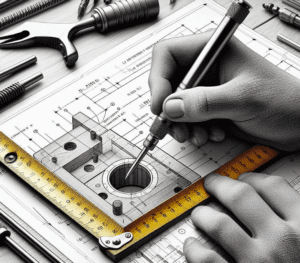
Use a pencil and ruler to mark the location of the pilot hole. The mark should be about 1/8 inch to 1/4 inch smaller than the diameter of the screw or bolt.
Step 2: Choose the correct drill bit.
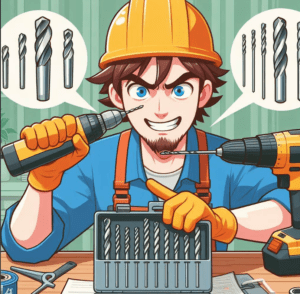
The size of the drill bit should be slightly smaller than the diameter of the screw or bolt. For example, if you are using a #8 screw, you can use a #6 drill bit.
Step 3: Insert the drill bit into the chuck and secure it.
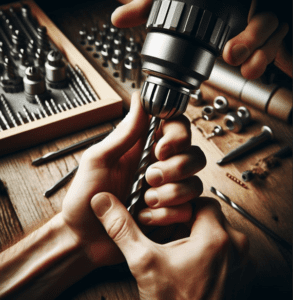
Turn the chuck counterclockwise to open it and insert the drill bit. Tighten the chuck to secure the drill bit in place.
Step 4: Start the drill slowly and gradually increase the speed.
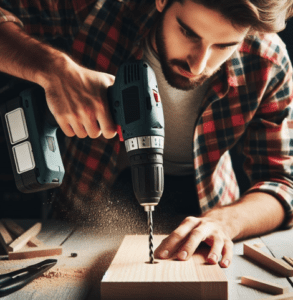
Hold the drill steady and apply light pressure to the workpiece. As the pilot hole begins to form, you can increase the speed of the drill.
Step 5: Drill the pilot hole to the desired depth.
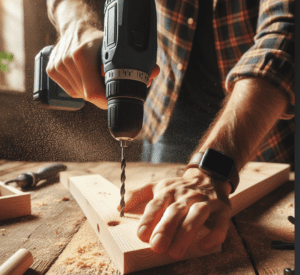
The pilot hole should be about the same depth as the length of the screw or bolt. Stop the drill and measure the hole with a ruler to check the depth.
Step 6: Remove the drill bit from the workpiece and clear any debris.
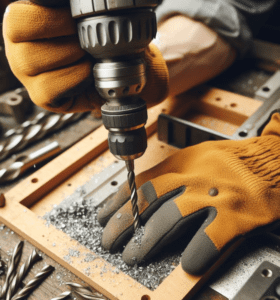
Turn off the drill and remove the drill bit. Use a wire brush or shop vacuum to clean out any debris from the hole.
Step 7: Drive the screw or bolt into the pilot hole.
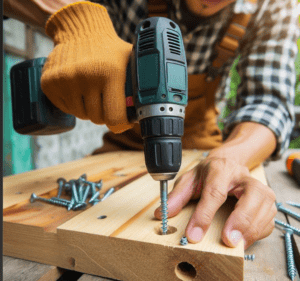
Apply even pressure to the screwdriver and turn it until the screw or bolt is flush with the workpiece.
FAQ:
What are the benefits of drilling a pilot hole?
Drilling a pilot hole before driving a screw or bolt has several benefits:
- It prevents the wood from cracking or breaking.
- It makes it easier to drive the fastener in.
- It helps to prevent the fastener from loosening over time.
What is the best way to mark the location of the pilot hole?
You can use a pencil, ruler, marking gauge, or laser level.
What is the difference between a pilot hole and a countersink?
A countersink is an angled hole that is drilled into the surface of the wood to create a smooth, angled surface for the head of a screw or bolt.
How do I know what size drill bit to use?
The size of the drill bit should be slightly smaller than the diameter of the screw or bolt. You can find a chart of drill bit sizes online or in the owner’s manual.
How deep should I drill the pilot hole?
The pilot hole should be about the same depth as the length of the screw or bolt.
How do I prevent the screw from splitting the wood?
Use a sharp drill bit and drill slowly and evenly. Apply light pressure to the drill and avoid overdriving the screw.
What do I do if I drill the pilot hole too deep?
If you drill the pilot hole too deep, you can try to re-drill it with a more minor drill bit. You can also use a wooden plug to fill the hole and then drill a new pilot hole.
Conclusion
Always wear safety glasses when drilling any screw, as this will protect your eyes from debris. When driving screws into dense materials like hardwoods, it is essential to use the correct drill bit size to prevent the screw from splitting the wood. For smaller drills, it is often better to use a hole saw, which will create a giant hole that can accommodate the screw shank without splitting the wood.
To ensure that the screw head is flush with the work surface, you can use a countersink bit. This will create a slightly angled hole that the screw head can sit in without protruding. When driving wood screws, it is essential to use a power drill and to apply low speed to prevent the screw from breaking.
Always drill a pilot hole when driving wood screws, as this will help to prevent the wood from splitting and make it easier to drive the screw. The size of the pilot hole should be slightly smaller than the diameter of the screw shank. For most common screws, a 3⁄16-inch pilot hole is sufficient.
If the screw hole is too large, you can use a slightly larger screw size or a wood filler to fill the space. When driving screws into soft wood, you can use a more minor drill bit and a hammer to drive the screw in by hand.
Always make sure that there is enough material on both sides of the screw hole to prevent the screw from ripping out of the wood. When driving screws into boards that are already attached, you can use glue to add extra strength.
When working with a drill press, it is essential to use the correct size drill bit and to adjust the depth stop to prevent the screw from going too far into the wood. You can also use a drill press to countersink screws if you have the right bit.
In general, it is always best to err on the side of caution when driving screws. If you are not sure about the right size drill bit or the depth of the pilot hole, it is better to drill a smaller hole or use a smaller screw size.
With a bit of practice, you will be able to drive screws like a pro in no time!






















